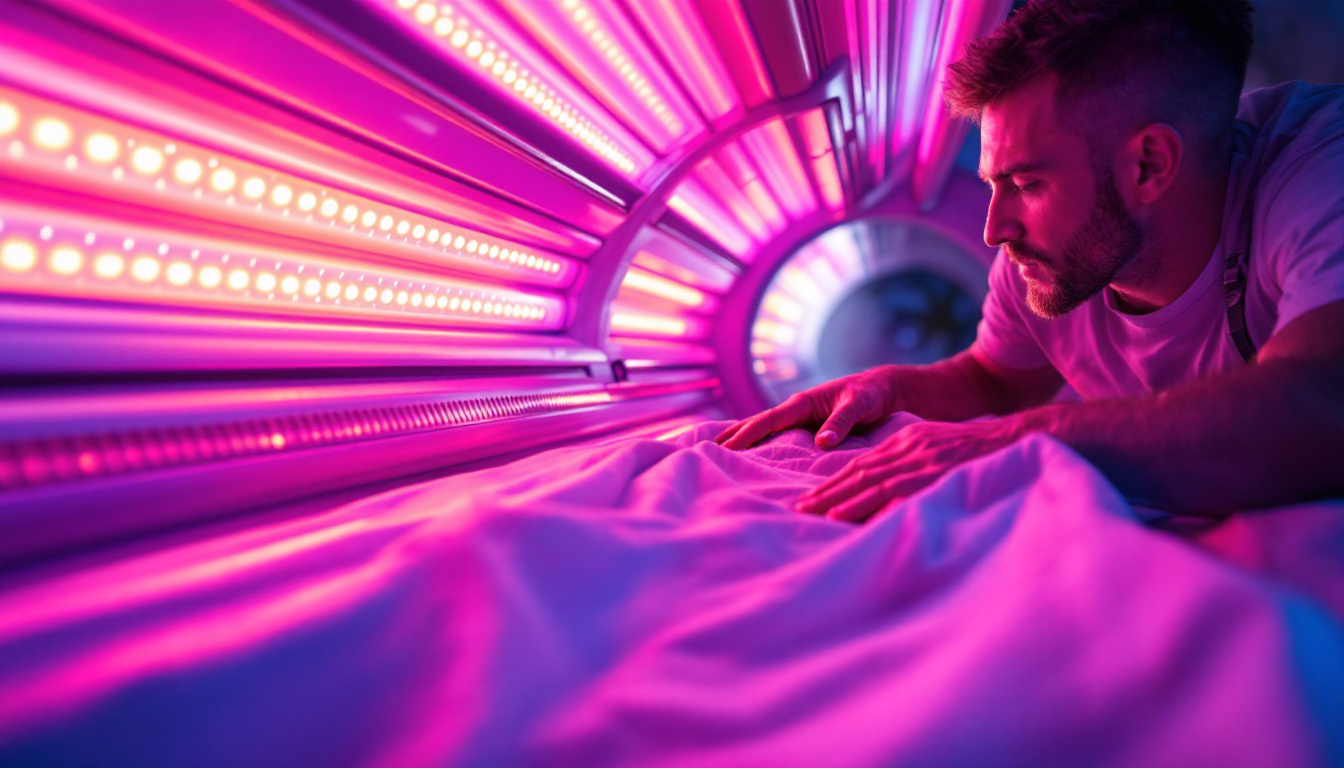
As the demand for tanning beds continues to rise, understanding the nuances of the bulbs used in these devices becomes increasingly important for lighting contractors. Selecting the right bulbs not only enhances the tanning experience but also ensures the longevity of the equipment. This article provides a comprehensive overview of bulbs for tanning beds, offering quick tips and insights for lighting contractors.
Tanning bed bulbs are specifically designed to emit ultraviolet (UV) light, which stimulates the production of melanin in the skin, resulting in a tanned appearance. These bulbs come in various types, each with its unique characteristics. Understanding these differences is crucial for making informed decisions when selecting bulbs for clients. Additionally, the lifespan and maintenance of these bulbs can significantly impact their performance and effectiveness, making it essential for operators to stay informed about the best practices for upkeep.
There are primarily two types of tanning bed bulbs: low-pressure and high-pressure. Low-pressure bulbs are the most common and are typically used in standard tanning beds. They emit a balanced spectrum of UV light, which is effective for achieving a tan while minimizing skin damage. These bulbs generally have a lifespan of around 1,000 hours, and regular replacements are necessary to maintain optimal tanning results.
High-pressure bulbs, on the other hand, are found in more advanced tanning systems. They deliver a more concentrated dose of UV light, resulting in faster tanning sessions. However, these bulbs can also increase the risk of skin damage if not used properly. Understanding the differences between these types is essential for contractors to provide the best recommendations to their clients. Moreover, high-pressure systems often come with built-in cooling mechanisms to protect the skin during sessions, which is an important feature for users who may be sensitive to heat.
The UV spectrum is divided into three categories: UVA, UVB, and UVC. UVA rays penetrate the skin more deeply and are primarily responsible for tanning. UVB rays, while also contributing to tanning, can lead to sunburn and skin damage. UVC rays are largely absorbed by the atmosphere and do not significantly affect tanning.
When selecting bulbs, it’s crucial to consider the balance of UVA and UVB output. A bulb with a higher UVA output will provide a quicker tan with less risk of burning, making it a preferred choice for many clients. Lighting contractors should assess the needs and preferences of their clients to recommend the appropriate bulb type. Furthermore, understanding the skin types of clients can help tailor recommendations, as individuals with fair skin may require a different UV balance compared to those with darker skin tones. This personalized approach not only enhances client satisfaction but also promotes safer tanning practices.
Choosing the right bulbs for tanning beds involves several important factors. Lighting contractors should take into account the specific needs of the tanning salon, the preferences of clients, and the overall goals of the tanning experience.
Understanding the demographic of the tanning salon clientele is essential. Different clients may have varying skin types, tanning goals, and sensitivities to UV exposure. For instance, clients with fair skin may prefer bulbs that emit a lower UVB output to minimize the risk of burning.
Additionally, some clients may be looking for a quick tan, while others may prefer a more gradual approach. By assessing these needs, lighting contractors can recommend the most suitable bulbs that align with the clients’ preferences and safety requirements. Furthermore, it’s important to consider the psychological aspect of tanning; many clients seek a relaxing and rejuvenating experience. The right bulb can enhance this atmosphere, providing not only effective tanning but also a pleasant ambiance that encourages repeat visits. Offering varied options, such as bulbs that produce a more natural-looking tan or those that include skin-nourishing elements, can cater to a broader range of client desires.
The lifespan of tanning bed bulbs is another critical consideration. Most low-pressure bulbs last around 800 to 1,200 hours of use, while high-pressure bulbs can last significantly longer, often exceeding 1,500 hours. However, performance can diminish over time, leading to inconsistent tanning results.
Regular maintenance and timely replacement of bulbs are vital to ensure optimal performance. Lighting contractors should advise salon owners on the importance of keeping track of bulb usage and scheduling replacements to maintain the quality of tanning services. Additionally, educating salon staff about the signs of bulb fatigue—such as longer tanning sessions yielding less color—can help in maintaining customer satisfaction. Proper maintenance not only extends the life of the bulbs but also ensures that clients receive the best possible tanning experience, reinforcing their trust in the salon’s commitment to quality.
With growing concerns about energy consumption, selecting energy-efficient bulbs is becoming increasingly important. High-efficiency tanning bed bulbs not only reduce energy costs but also contribute to a more sustainable operation.
Contractors should be aware of the energy ratings of different bulbs and recommend options that provide a balance between performance and energy efficiency. This approach not only benefits the salon financially but also appeals to environmentally conscious clients. Moreover, salons can market their commitment to sustainability by using energy-efficient bulbs, which can enhance their brand image and attract a clientele that values eco-friendly practices. Implementing energy-efficient technologies, such as timers and sensors that optimize bulb usage, can further reduce costs and environmental impact, creating a win-win situation for both the salon and its patrons.
Proper installation of tanning bed bulbs is crucial for ensuring safety and optimal performance. Lighting contractors should follow specific guidelines to ensure that bulbs are installed correctly and securely.
Before beginning the installation process, contractors should always prioritize safety. This includes disconnecting the power supply to the tanning bed and wearing appropriate personal protective equipment (PPE), such as gloves and safety glasses. UV exposure can be harmful, so taking precautions is essential.
Additionally, it’s important to handle bulbs carefully, as they can be fragile. Contractors should avoid touching the glass surface of the bulbs with bare hands, as oils from the skin can create hot spots and lead to premature failure.
When installing bulbs, ensuring proper alignment and positioning is vital for achieving even tanning results. Bulbs should be installed according to the manufacturer’s specifications, as improper placement can lead to uneven tanning and reduced effectiveness.
Contractors should also check the reflectors within the tanning bed, as they play a significant role in directing UV light towards the client. Ensuring that reflectors are clean and in good condition will enhance the overall tanning experience.
After installation, it’s essential to test the tanning bed to ensure that the bulbs are functioning correctly. This includes checking for any flickering or inconsistent lighting, which may indicate a problem with the bulbs or the electrical system.
Calibration of the tanning bed’s timer and settings is also important. Contractors should verify that the timer is accurately set to provide the appropriate exposure time for clients, minimizing the risk of overexposure and skin damage.
Despite careful selection and installation, issues can arise with tanning bed bulbs. Lighting contractors should be prepared to troubleshoot common problems to ensure that clients receive the best possible tanning experience.
Flickering or dim bulbs can be a sign of several issues, including a faulty connection or a bulb nearing the end of its lifespan. Contractors should first check the connections to ensure they are secure. If the connections are intact, it may be time to replace the bulb.
In some cases, flickering can also be caused by electrical issues within the tanning bed itself. If troubleshooting does not resolve the problem, consulting with an electrician may be necessary to address any underlying electrical concerns.
Clients may sometimes experience uneven tanning results, which can be frustrating. This issue can stem from several factors, including improper bulb placement, dirty reflectors, or even the client’s skin type.
Contractors should inspect the installation to ensure that bulbs are correctly aligned and that reflectors are clean. Additionally, educating clients about their skin type and how it affects tanning can help manage expectations and improve results.
Clients often inquire about how frequently they should replace their tanning bed bulbs. While the lifespan of bulbs varies, a general rule of thumb is to replace low-pressure bulbs every 800 to 1,200 hours and high-pressure bulbs every 1,500 hours or as needed.
Contractors should encourage salon owners to keep a log of bulb usage and establish a replacement schedule to maintain consistent tanning quality. Regular communication with clients about the importance of timely bulb replacement can also enhance their overall experience.
In the competitive world of tanning salons, understanding the intricacies of tanning bed bulbs is essential for lighting contractors. From selecting the right type of bulb to ensuring proper installation and troubleshooting common issues, contractors play a vital role in enhancing the tanning experience for clients.
By staying informed about the latest advancements in tanning technology and maintaining open communication with salon owners and clients, lighting contractors can provide invaluable support and guidance. Ultimately, the right bulbs can make a significant difference in the quality of tanning services offered, leading to satisfied clients and successful salons.
Ready to elevate your tanning salon’s experience with the highest quality bulbs? Look no further than LumenWholesale, where we provide lighting contractors with spec-grade lighting products at unbeatable wholesale prices. Our selection of tanning bed bulbs meets rigorous industry standards, ensuring you deliver reliable and high-performance lighting to your clients. With free shipping on bulk orders, you can stock up on the best lighting solutions without worrying about hidden fees. Make the smart choice for your business and visit LumenWholesale today to take advantage of our exceptional value and convenience.

Explore the pros and cons of kitchen fluorescent light fixtures versus modern alternatives in this insightful guide.

Discover the essential role of ballasts in lighting systems with our comprehensive guide tailored for lighting contractors.

Discover the pivotal role ceiling lamps play in lighting installations.

Discover essential tips and best practices for lighting contractors on effectively installing and utilizing motion sensor switches.